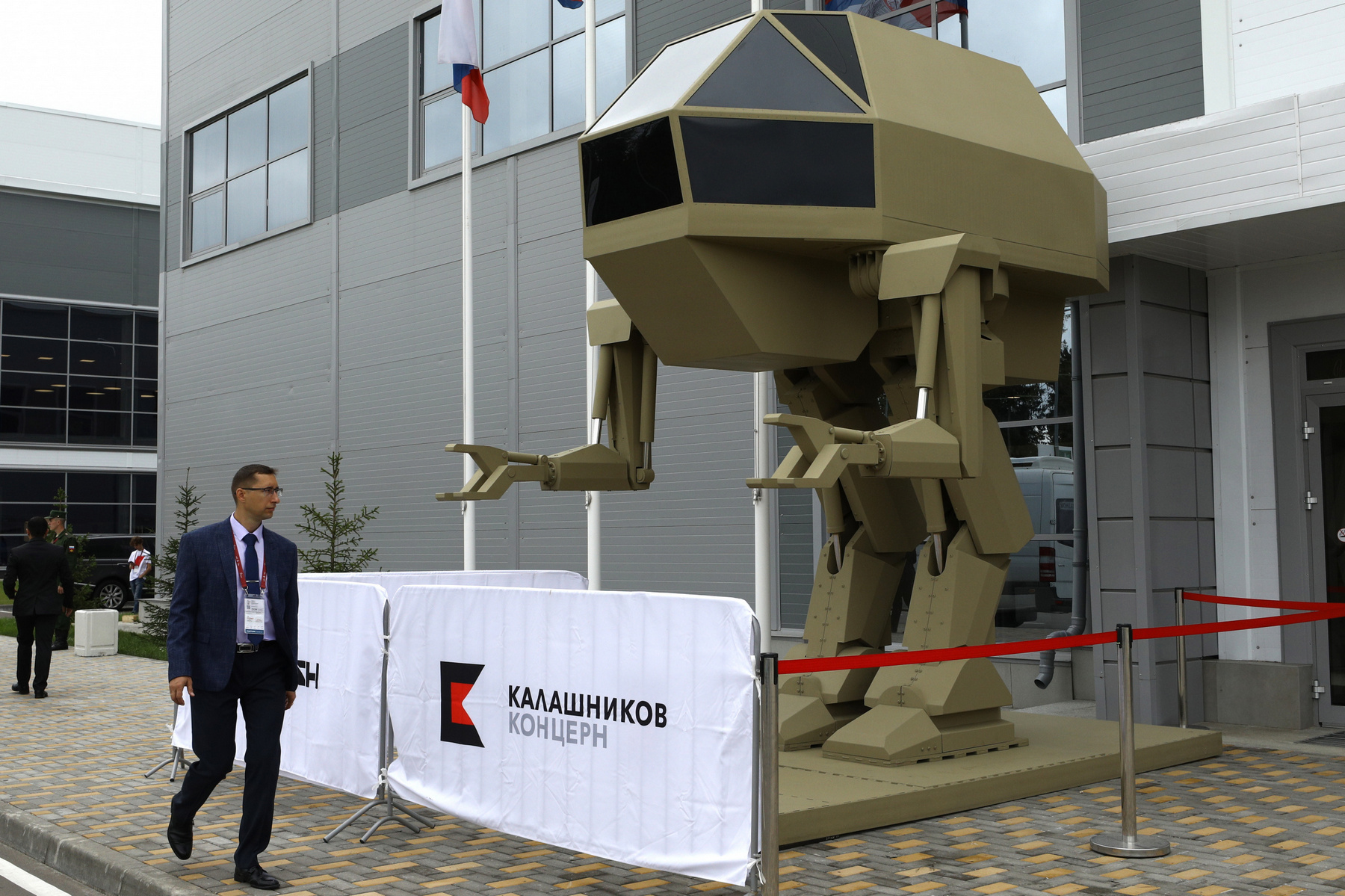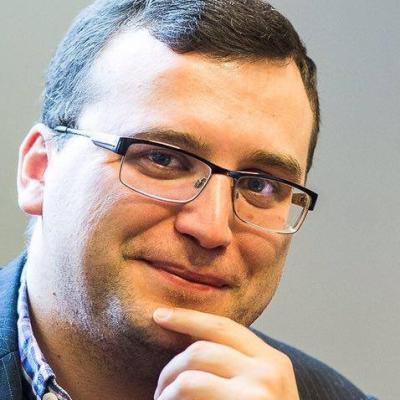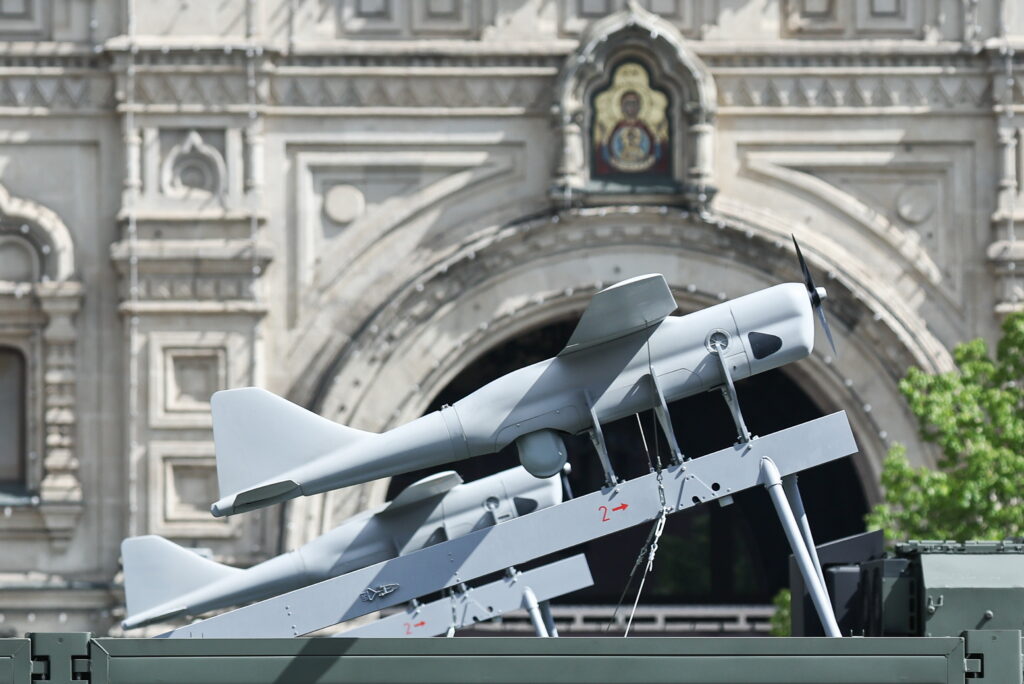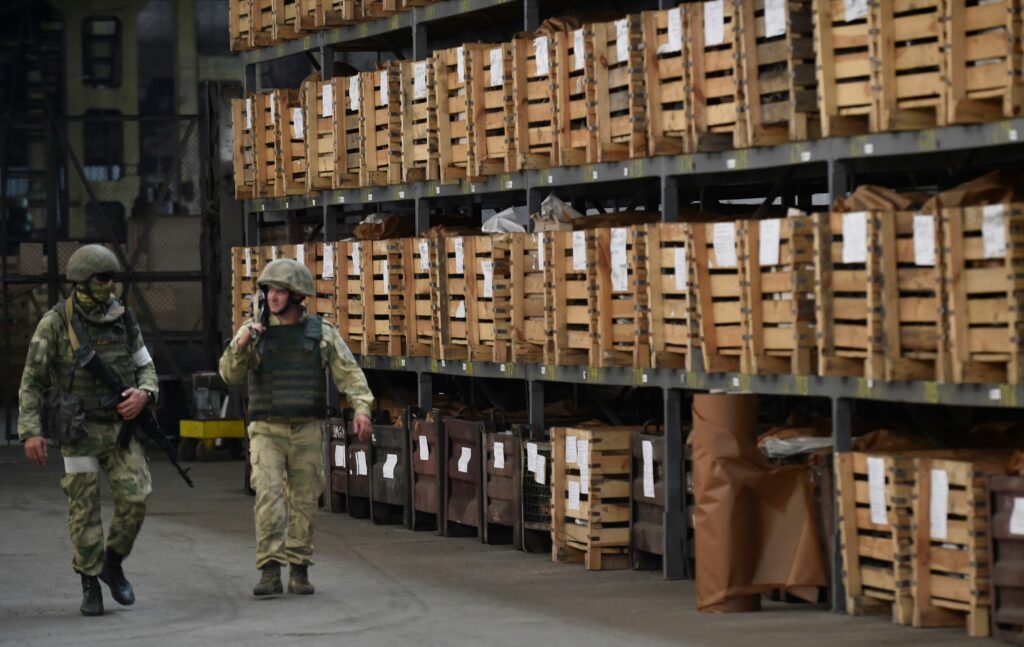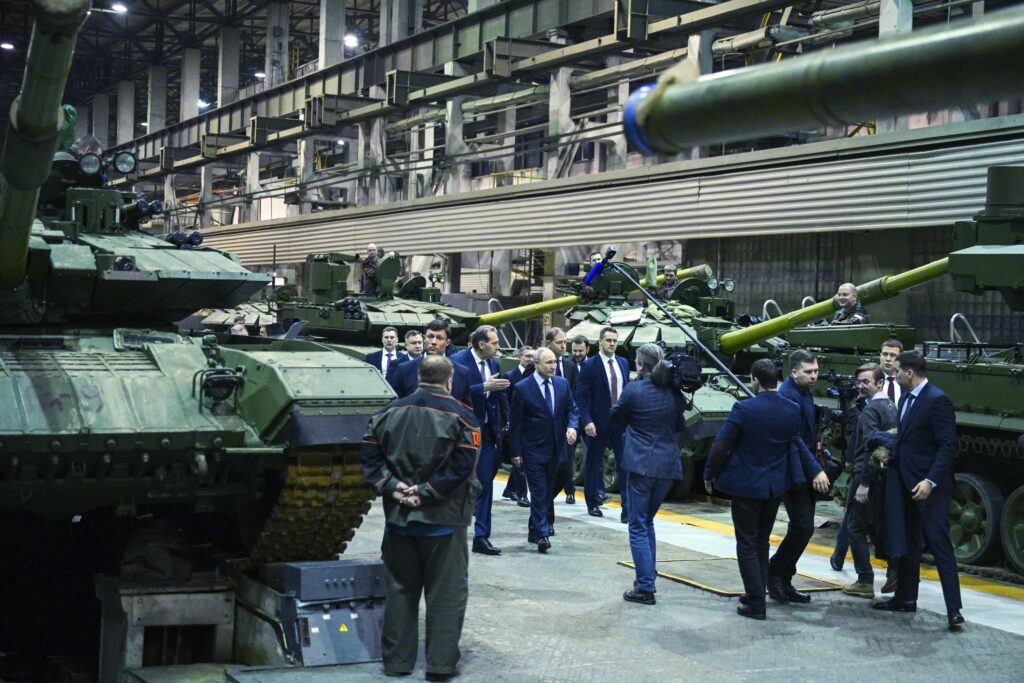Russia decided more than a decade ago to bank on ramping up the quantity and quality of its military drones. (Here, Israeli drone technology played a major role.) Russia’s armed forces also started to develop unmanned combat ground vehicles. The Russian military has regularly showcased its achievements — for example, here,and here. And there are plenty of sightings of this new equipment used on the battlefield in the Donbas and Syria. However, the Russian command was taken aback when Turkey used its drone force against Assad’s troops during the latest escalation in the Syria’s Idlib province in February-March this year.
This is because the Russian armed forces have not yet caught up with the latest developments in military robotics, as planned during the presidency of Dmitry Medvedevt. This predicament will stimulate Moscow to seek novel solutions, both military and political. Besides, the level of military robotics is also a key indicator of scientific and industrial capability in general.
Politicisation as a method of problem solving
Russia’s armed forces inherited several decades of experience in using reconnaissance drones from the Soviet army. The technical limitations of the systems developed in the 1960s through the early 1980s were not the main problem; it was actually the natural unpreparedness of the USSR/Russia for the paradigm shift in unmanned aviation since the mid-1980s.
Drones’ speed and their ability to collect information on large stationary targets and troop build-ups deep in the enemy’s territory was what mattered most in the Cold War. Such UAVs were in fact returnable multi-use cruise missiles, carrying cameras instead of warheads. It took hours to prepare them for flights and process the information they collected. The flight itself lasted a few minutes.
In the 1980s the need emerged to get real-time battlefield information round the clock, under any weather conditions. The speed and coverage of reconnaissance away from the front line became less vital. What mattered was a drone’s flight duration, its electronics, its dimensions and its armament capacity. This was facilitated by he emergence of precision weaponry and new information systems. Israel’s ability to harness this new reality was behind its defeat of the Syrian army in the 1982 Lebanon War. And that came as a shock to the Kremlin.
Undoubtedly, Moscow had theoretical insights into the new methods of warfare. So it made attempts to put them into practice. Thus, in the very late 1980s the tactical ISR (intelligence-surveillance-reconnaissance) Pchela appeared, a drone capable at most of just five 2-hour flights. On the whole, Moscow was not ready to take the lead here. Financial difficulties were one reason. Yet there was also a lack of specialists and technological access. And most key, the way R&D and manufacturing in the military were organised was an obstacle.
Only as late as the aftermath of the 2008 Russo-Georgian War did Moscow realise that, among many other problems, Russian troops faced an acute shortage of intelligence assets. Perhaps the most painful sign of this shortage were instances of blue-on-blue artillery shootings. It was then that the availability of drones for the Russian armed forces turned into a political priority rather than military necessity. Hence the current growing interest not only in drones but also other types of warbots. A military-and-technical problem had to be politicised to be solved. Appropriated by the Russian political system, the problem-solving process acquired its own logic, and became an end in itself.
Israeli imports and mercenaries
The Kremlin’s interest made it possible to make up for the previous two decades: by 2009, reconnaissance drones were purchased in Israel, with a license to manufacture in Russia. Thus, the Russian army received dozens of Forpost and Zastava reconnaissance vehicles developed by the Israeli company AIA in the 1980s-1990s. Yet imports of components for civilian production available on the world market at the time played a much greater, though still underestimated, role in solving Russia’s shortage of reconnaissance drones.
Thus in 2010, the Russian military complained that despite 5 billion roubles (more than $150 million at the exchange rate of the time) allocated to R&D, it did not receive a single drone that met its criteria. In 2012, the Russian armed forces received their first small, tactical Orlan-10, developed by the Special Technology Centre (STC). This has become the most numerous drone in the army: hundreds have been produced, going to artillery units and battle groups of ground and airborne troops.
This result was achieved by equipping the Orlans with commercial cameras and infrared thermal imaging cameras produced in the US, Israel and Japan (Flir, Controp and Canon). Given how Russian artillery hardly ever uses precision-guided munitions, these cameras can adjust fire using visual landmarks linked to a terrain map. Thus, there was no need to equip them with more sophisticated and expensive guidance systems; it became possible to compensate for the shortage of intelligence assets during the war against Georgia.
Interestingly, private Russian companies played an equally important role in the development of drones. Their potential was also noticed by Russian military and intelligence in the early 2010s. These companies include primarily Izhevsk’s Zala Aero (owned by the Kalashnikov Concern since 2015), Enics from Kazan and Saint Petersburg’s Transas (since 2015 the former UAV division of this company, Kronstadt, has been owned by AFK Sistema). The private sector, which competes on the global market, is more operational than clumsy state defence enterprises even given the unfavourable Russian institutional environment and the small number of specialists who gained their professional experience under the Soviet system.
Drones based on imported components manufactured for civilian purposes do allow the military and siloviki to collect and process information. Still, it has been difficult to develop Russian-manufactured, more advanced reconnaissance and offensive drones equipped with radars and capable of staying aloft for hours.
Technical shortcomings and the Turkish challenge
The initial optimism of the Russian leadership was premature. The Orion (a MALE class UAV), capable of staying aloft for up to 24 hours and conducting reconnaissance at medium altitudes, has been in development since 2011 (Transas/Kronstadt). The first operational Orion was tested by the air force in November 2019. It crashed the very same month.
The Altius-U heavy medium-altitude drone with a satellite channel which can stay aloft for more than 24 hours has also been in development since 2011, put together by Transas and the Simonov design bureau. Its maiden flight took place as late as the summer of 2019. The project came after a high-profile criminal case against the head and co-owner of Simonov and a lawsuit by the military. In early 2020, production was transferred to the Rostec manufacturing facility in Yekaterinburg. The project needs serious improvements; the number to be produced after all the modifications is not settled.
When it comes to combat drones, the Sukhoi S-70 Okhotnik is the flagship project. Following almost a decade of construction, its maiden flight also took place last summer. This is in fact a demo-model, unlikely to come into service in its current form. It is more likely that the Altius will become a missile-armed drone.
Simply put, it took Russia ten years to do its homework and close the gap on its urgent need for reconnaissance tactical UAVs. Progress has come to a standstill, which is particularly visible when compared to the use of UAVs by the Turkish troops in Syria. Moscow was trying to catch up with the US and Israel, and then realised it was lagging behind Turkey, despite both political will and money invested in problem solving.
Of course, Russia can feel reassured that it has several Uran-9 tracked unmanned combat ground vehicles in service. And that it has been working on the robotization of T-72 tanks, as seen here and here. Despite difficulties creating advanced UAVs, such projects stem from Russian leaders’ fascination with the topic rather than a well-thought-out strategy. Hence, in response to the shock experienced in Syria, Russia will first try to improve ways to combat such technology. It will try to excel in the survivability of its forces on the battlefield in response to armed drones rather than improve its UAVs’ offensive capabilities.
It turns out, the role of warbots is seen through the prism of confrontation with NATO rather than the logic of military muscle-flexing in local conflicts, which was at heart of Russia’s efforts in this field for the past decade. So far, this logic of confrontation justifies Russia’s technological backwardness without undermining the existing political and economic model or the Kremlin’s foreign policy-making in recent years.
